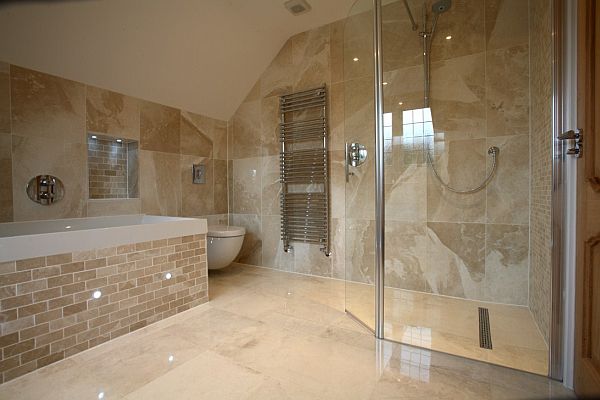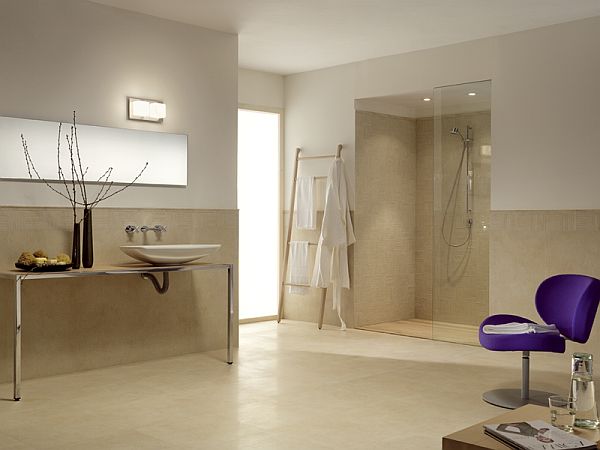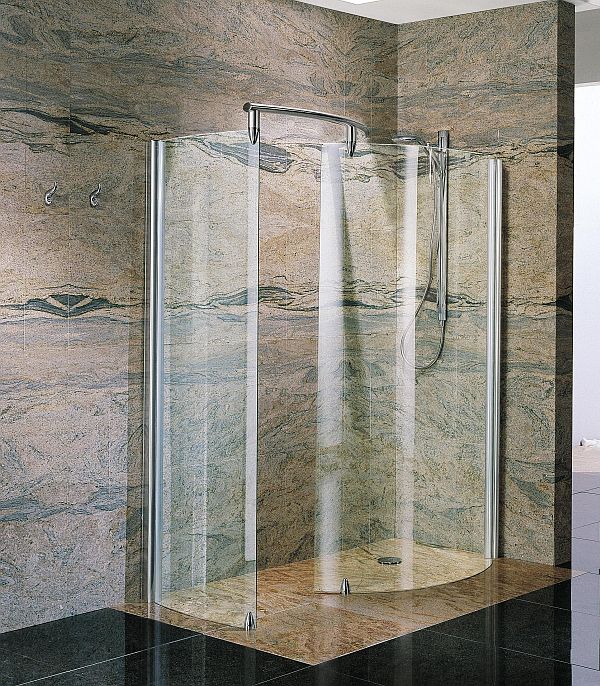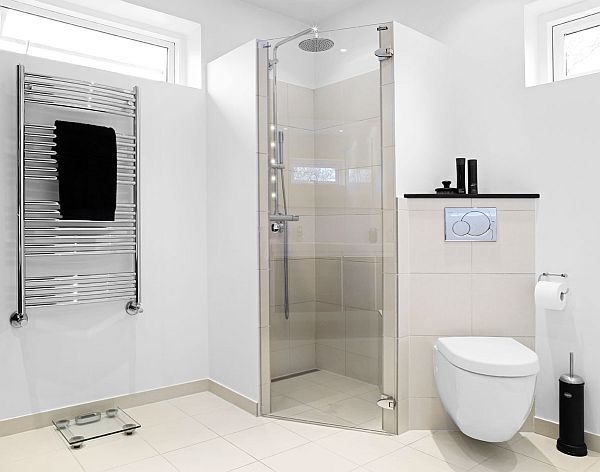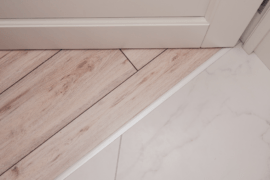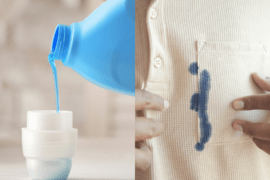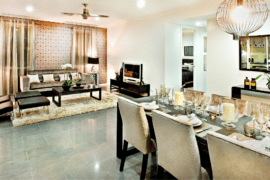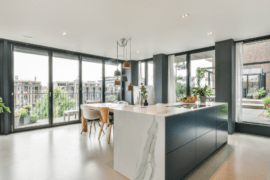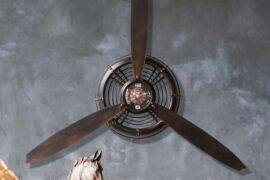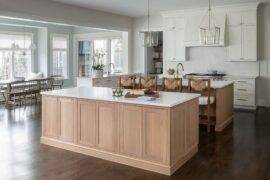A wet room is essentially a shower area in your bathroom where the floor is contiguous with that of the rest of the room.
A slight incline allows the water to escape through a drain in the floor. The lack of a barrier between the wet room floor and its surroundings allows for a more spacious and comfortable showering experience. While anyone can enjoy the luxurious experience that a wet room gives, wet rooms are also especially convenient for the elderly and those with mobility issues.
Practical Considerations
The first step in creating a wet room is to decide what style of wet room you would find most suitable for your particular needs and design aesthetic. Initially, you must make decisions based on functionality. Your wet room can have a multi-directional incline which allows for a single square or round drain.
However, this requires the use of smaller tiles.
A one-directional incline allows for larger tiles to be used but means you must incorporate a channel drain. You can choose to have walls to protect un-waterproofed areas of the room from spray or you can design a fully open-plan wet-room.
If you decide to create a walled wet room make sure you have enough space so that you are not constricted by the walls when you shower. Many people like to have large shower-heads or multiple sprays so as to better enjoy their daily shower.
Styles of Wet Room
When it comes to the inspiration and style of your wet room, you have a great degree of flexibility. When considering the design style of the wet room you wish to build think about what will be most suitable for your needs. Would you prefer a more relaxing environment or do you like to be invigorated when you shower? Inspirational ideas include using small blue and white tiles for a Moroccan style, using bamboo accessories and plants for a tropical feel, or incorporating natural stone tiles and woodland-inspired fittings to get back to nature.
Materials and Tools
The basic supplies needed to build a wet room include underfloor waterproofing, tiles, grout and a trowel, a suitable drain, glass walls, if required, and shower fixtures and fittings. Bear in mind that grout is porous. Smaller tiles use more grout and therefore you will have more porous surface area in your wet room.
If you choose small tiles for a mosaic or a multi-directional incline you may want to consider additional waterproofing. In addition to these supplies you must also select the accessories and other fixtures and fittings that best fit your chosen style. Extras such as heated towel racks and customizable shower heads can give your wet room an added element of luxury.
There are a variety of DIY wet room kits available for various sizes of wet room that help to make the whole process simple and easy.
Do you have a wet room?
